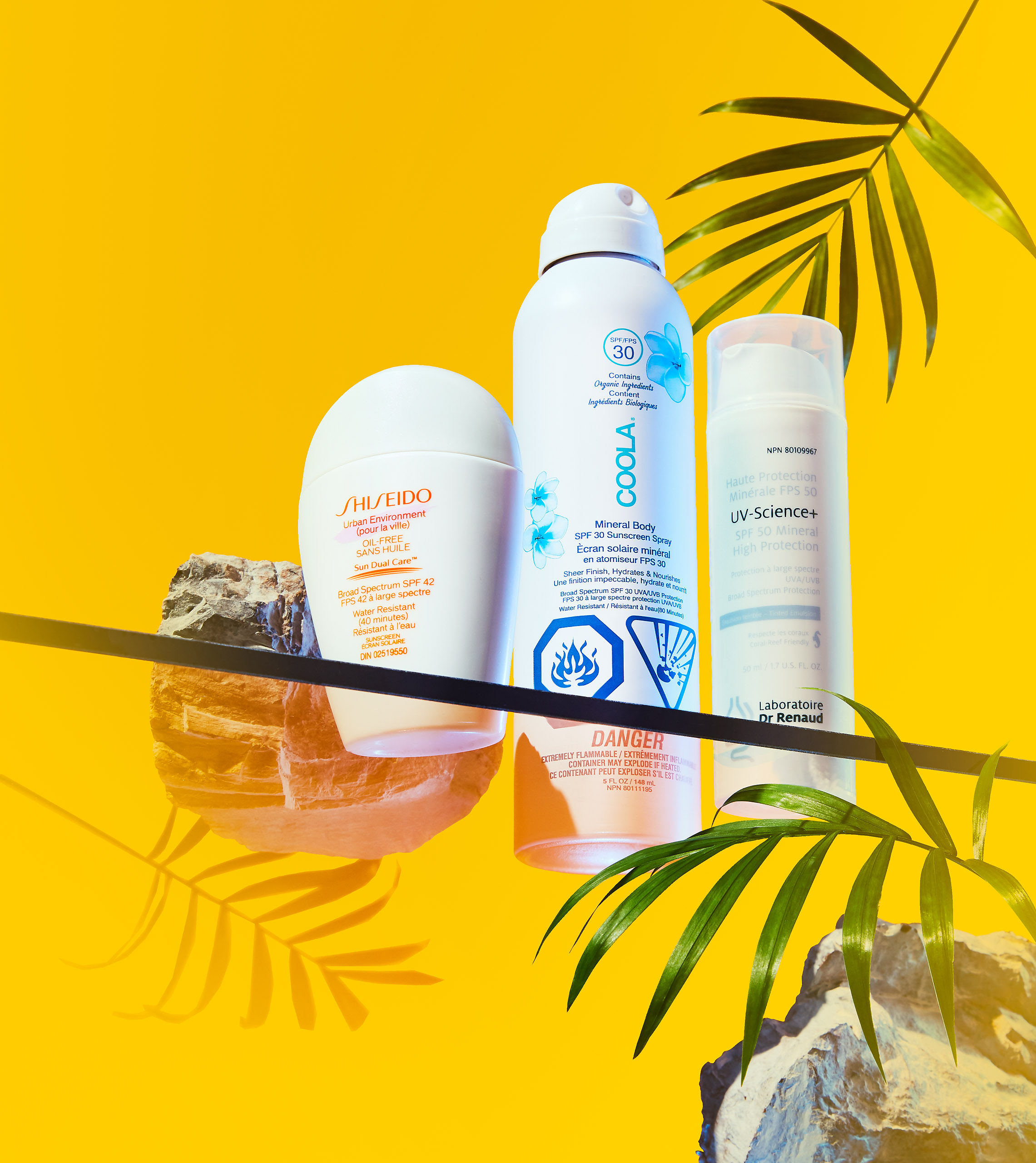Despite incontrovertible evidence that radiation from the sun damages the skin—some 80,000 Canadians can expect to be diagnosed with skin cancer this year alone—knowing what best protects us from its harmful effects is a bit of a minefield.
SPF, or sun protection factor, tells you how much of the sun’s rays it blocks. SPF 30, the minimum recommended, blocks nearly 97 per cent of UV rays, while SPF 50 blocks about 98 per cent, and SPF 100 about 99 per cent. Sunscreen should also be broad spectrum, meaning it protects skin from both UVA and UVB rays.
Then there’s the question of mineral versus chemical sunscreens. Chemical sunscreens work like a sponge that absorbs the sun’s harmful rays and then releases them as heat. And while their main ingredients, such as avobenzone, octinoxate, and oxybenzone, don’t exactly scream Mother Earth, there’s no scientific concern about their safety to humans.
“So far no studies have actually shown harmful effects in humans,” says Dr. Janet Ip, a cosmetic physician at Vancouver’s Project Skin MD and a UBC clinical instructor, who also has a medical practice with a special interest in skin cancer. “And we know the benefits of sunscreen in preventing skin cancer and possible death far outweigh potential risks.” These sunscreens are much easier to apply, so if people are more likely to use them, that’s a major plus.
Chemical sunscreen still dominates the market, but mineral sunscreen has been all the rage the last few years. Its mainly titanium and zinc oxide formulations create a physical shield that deflects the sun’s harmful UVB and UVA rays, and its ingredients are coral-reef safe, which is useful to know when travelling. While today’s mineral options are lighter, less greasy, and come in a variety of tints to better blend with skin tones, they’re less widely available in the same easy-to-apply formulations as their chemical cousins. “Personally, I have never found a mineral sunscreen that I like enough to use all over my body,” says Ip, who opts for thicker mineral sunscreen on her face and chemical for the rest of her body.
That may change, thanks to California-based cult-fave Coola’s SPF 30 organic mineral body sunscreen spray, which debuted this year. Its fragrance-free, water-resistant formula sprays on sheer in a matte finish with no residue—and it is reef-compliant for Hawaiian getaways.
While daily sunscreen helps keep sun damage in check, it can conversely create other epidermal issues, such as irritating sensitive skin. This season, Burt’s Bees addresses this, releasing Sensitive Solutions SPF 30 Gentle Day Lotion with rice milk, aloe, and squalane for sensitive skin (and bears the National Eczema Association Seal of Acceptance). Developed in conjunction with dermatologists, the formulation delivers moisturizer and sunscreen in one: its main active ingredient, zinc oxide, works to keep the rays at bay while its aloe-and-rice-milk formulation helps calm and soothe skin. And from Quebec’s Laboratoire Dr. Renaud, UV-Science+ SPF 50 Mineral High Protection can also be used on the most sensitive or temporarily weakened skin as a daily facial sunscreen. It contains 100 per cent mineral filters with a slight tint to counter the minerals’ whiteness.
If you have combination or oily skin, pores can get clogged with too heavy a formulation. Shiseido’s new SPF 42 Urban Environment Oil-Free Sunscreen not only controls excess sebum but also aims to actually improve users’ skin. Its Sun Dual Care technology creates a symbiotic relationship between sun and skin via “beauty beams,” beneficial light that helps stimulate cells for firmer skin. Thanks to the infusion of phycocyanin from spirulina algae and fluorescent zinc oxide, the Sun Dual Care range converts a portion of sunlight into skin-care light. Shiseido’s research found that this type of light reduces excessive inflammatory factors and fights against damage caused by UV exposure, excess sebum, and pollution. Because of this light conversion, sunlight is transformed into skin-care benefits that lead to more vibrant skin.
With a product now available for every skin type and activity, feeling safe and protected while enjoying the sun could not be easier.
Read more from our Summer 2022 issue.








